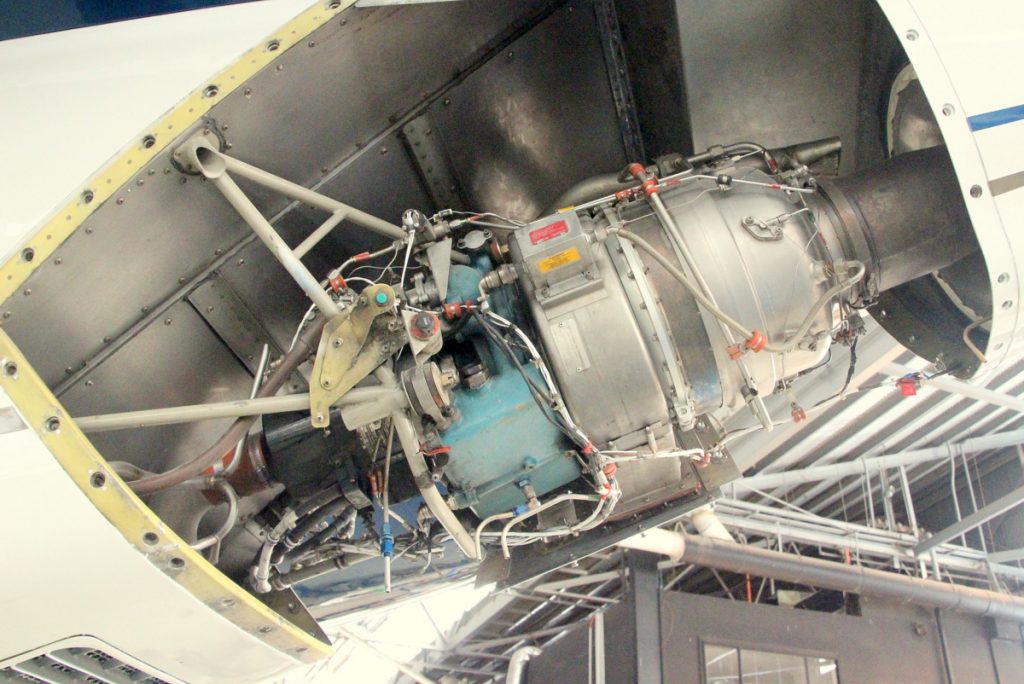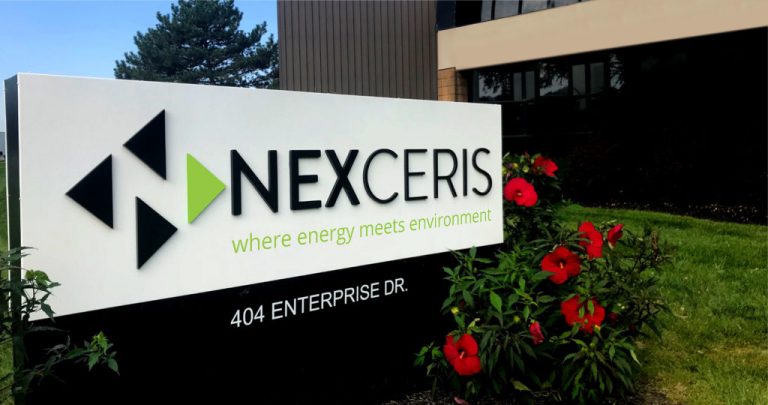Power & Energy
Solid Oxide Fuel Cells
The Department of Defense (DoD), Department of Energy (DOE) and NASA all have interest in developing solid oxide fuel cell (SOFC) technology as this is a path to enable efficient power systems.
The DoD vision for SOFC technology is to develop lightweight logistic fuel-compatible systems for multiple applications, including: silent watch auxiliary power units, battery chargers, range extenders for electric vehicles and power for unmanned aerial vehicles. By providing power at a higher efficiency this reduces the burden on the supply lines, which ultimately can save our soldiers’ lives.
The DOE sees this technology as a means to achieving cost-effective electricity generation from abundant domestic coal and natural gas resources, with minimal use of water and near-zero atmospheric emissions of carbon dioxide and pollutants. Read the DOE article.
Nexceris’ Fuel Cell Business Unit works closely with partners from these agencies to develop our SOFC technology to meet their specific goals.
Energy Storage
Energy storage is proliferating as our modern societies become increasingly mobile, efficient, and environmentally conscious. Energy densities provided by modern technology such as lithium-ion batteries enable valuable use cases for energy storage in mobile phones to electric vehicles and grid-connected energy storage systems.
Nexceris has been working with the U.S. Navy since 2010 to develop and deliver safety monitoring products to ensure the use of storage energy is safe, responsible and resilient. Our Li-ion Tamer® technology is being used in energy storage systems to detect and protect against thermal runaway of lithium-ion battery systems.
In the Nexceris Sensors division, monitors can be used for lithium-ion emissions. Doing so can improve their situational awareness of the system while providing valuable warning of a failing battery so they can ensure safe and reliable energy.
Utilities
Grid modernization efforts are currently forming the future of our energy grid. The infrastructure that has powered over a century of growth is looking to a future to deliver resilient, reliable, affordable, and environmentally responsible electricity to fuel growth. New technologies are enabling changes to the grid that were not previously feasible.
One example of these changes is FERC Order 841 which opened the door for energy storage to participate in the wholesale energy, capacity and ancillary services markets. Nexceris is a developer and supplier of solutions that make energy production safer, more efficient, and environmentally responsible.
In the Nexceris Sensors division, our lithium-ion battery (Li-Ion Tamer®) systems can be used to provide monitoring of all venting categories outlined in their standard. Doing so can improve their situational awareness of the system while providing valuable warning of a failing battery.
Solar Energy
Solar energy is one of the many forms of green energy storage methods utilized to support utility grids, EV charging stations, and residential energy storage. Energy is captured by the solar panels and then often stored in lithium-ion battery systems for long-term use. Those battery systems require multiple safety layers, with off-gas detection being just one.
Nexceris has developed the Li-ion Tamer® off-gas monitoring system to improve the safety and resiliency of energy storage systems for solar technology of any scale. The early warning of battery failure provided by our technology can help to protect against thermal runaway of lithium-ion battery systems. Li-ion Tamer® is currently in use worldwide, increasing customer confidence and energy reliability throughout the industry.
Nuclear Safety
In the Nexceris Sensors division, Li-ion Tamer® for lithium-ion battery system can be used to provide monitoring of all venting categories outlined in their standard. Doing so can improve their situational awareness of the system, while providing Grid modernization efforts currently forming the future of our energy grid. The infrastructure that has powered over a century of growth is looking to a future to deliver resilient, reliable, affordable, and environmentally responsible electricity to fuel growth.
Oil & Gas Refining
Filling Stations
Advanced Energy
Advanced energy solutions can be broken down into multiple industries. Electricity generation includes power plants of all sizes. With the expansion of clean energy, suppliers have to keep up with the times. Energy Storage Systems (ESS) are needed to capture and hold the energy for later use.
Transportation vehicles are also utilizing batteries and fuel cells to operate cleaner. Fuel production and the delivery industry is growing in conversion processes such as electricity generation and fuel cells that are also mainly in transportation.
In the Nexceris Sensors division, the Li-ion Tamer® monitoring system for lithium-ion batteries can be used to provide another layer of safety. Doing so can improve their situational awareness of the system while providing valuable warning of a failing battery.
Nexceris Fuel Cell Applications
Auxiliary Power Generation
Auxiliary power units (APU) are used in a wide variety of applications, including:
- Power for deicing equipment and sensor arrays on high altitude long endurance (HALE) UAVs
- Battery charging or hotel power after vehicles reach their destination
- Power for communications for command and control applications.
These systems typically require lightweight and high-efficiency operation. Nexceris’ SOFC Stack Design can be tailored for achieving increased efficiency and fuel flexibility for use in these applications. What separates our technology from the competition is our sulfur tolerant cell/stack formations which enable the use of logistic fuel such as JP-8 or JP-5.

Residential Power Generation
Another area being explored for solid oxide and other fuel cell technologies is residential power generation. Fuel cell systems installed in or outside residential dwellings can be used for primary or backup power, providing anywhere from less than 1 kW and up to 5 kW of power. These systems are small and quiet and can operate 24 hours a day, 7 days a week. In addition, they can provide power as well as heating for air and/or water using a process called Combined Heat and Power (CHP). The most successful example of the use of fuel cells for residential applications is Japan’s Ene-Farm program, which had over 300,000 systems as of 2019.

Nexceris Updates

Nexceris Celebrates Earth Day 2025
Nexceris has made the Columbus Business First Fast 50 list. The Fast 50 list consists of the fastest-growing businesses in Central Ohio, showing tremendous growth year after year.

Nexceris Honored to Make 2024 Fast 50 List
Nexceris has made the Columbus Business First Fast 50 list. The Fast 50 list consists of the fastest-growing businesses in Central Ohio, showing tremendous growth year after year.

Nexceris hosts Gov. Taizo Mikazuki from Shiga Prefecture, Japan
During his visit to Columbus for the 54th Annual Midwest U.S.-Japan (MWJA) Conference Sept. 9-10, Gov. Taizo Mikazuki of the Shiga Prefecture made a significant stop
